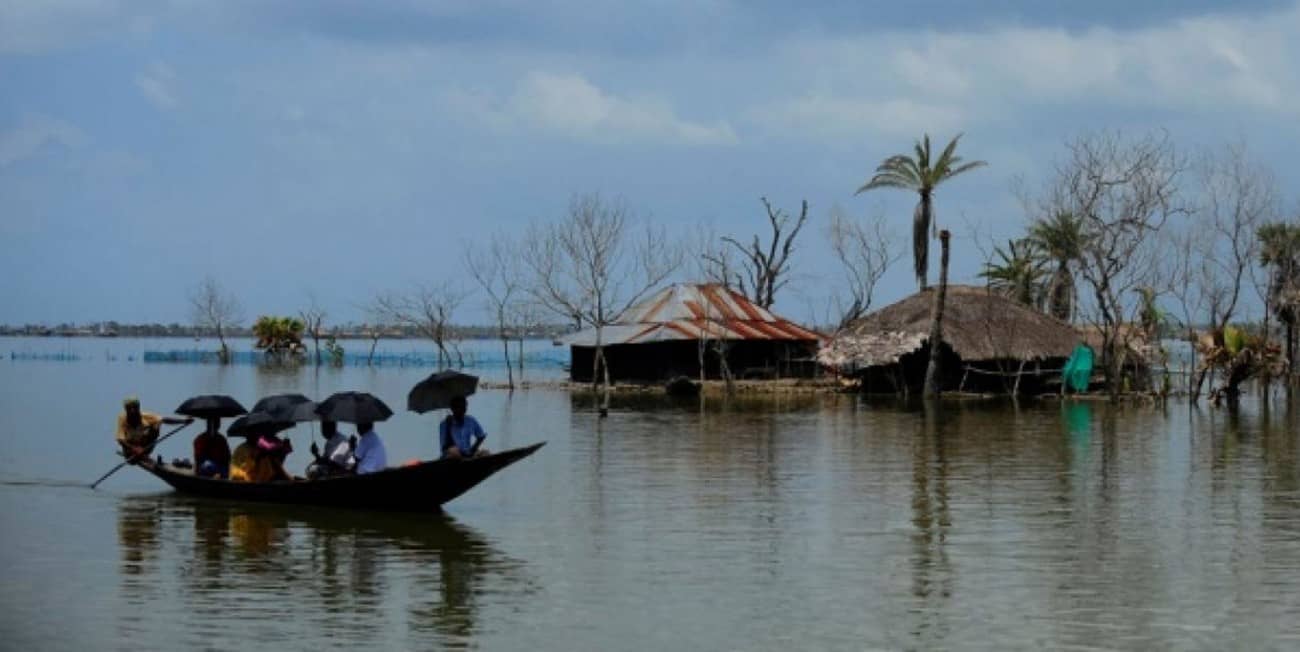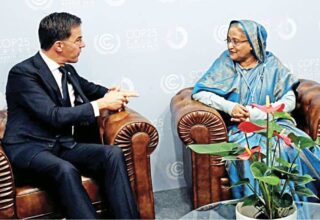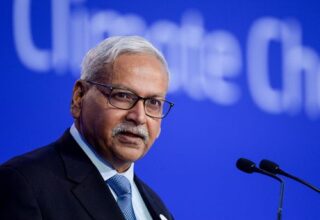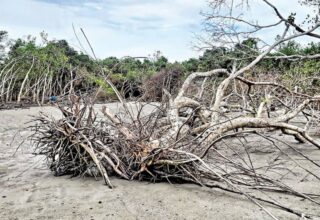
Under the United Nations Framework Convention on Climate Change (UNFCCC), all countries are supposed to develop their respective National Adaptation Plan (NAP) according to a prescribed format provided by international experts. Many countries have already embarked on preparing their NAPs for some time, but Bangladesh has only just started its own. It is now imperative for Bangladesh to consider carrying out its NAP, but not in a business as usual (BAU) way.
Let me start by explaining what BAU would be like. First, it involves hiring a consulting company who would then deploy a number of national and international individual consultants to be assigned to write various different chapters of the final report. The Bangladesh NAP is being run by the Department of Environment (DOE) on behalf of the government and funded through UNDP. They have recently selected the consulting group for the assignment and have also held a workshop to initiate their work. This is an excellent start.
However, it is important that we realise that Bangladesh in 2020 is a very different country in terms of its knowledge and actions on adaptation to climate change, which are far more advanced than they were 10 years ago. Many different activities have already taken place in the country and many more are taking place now. Just to mention one example, Bangladesh will now be hosting the South Asian Regional Centre of the Global Centre on Adaptation (GCA). Hence, it is important that the NAP that has just been started should aim to build on what is going on, avoid duplication with any ongoing activities and seek to find synergies with them instead.
Thus, the many consultants who will be given individual assignments and terms of reference must have teamwork under a strong leader as their first priority. What we should not end up with (which is often what happens) is that the individual consultant writes their own report and then the team leader has to put everything into a final report, which usually does not use much of what the individual consultant has contributed. Unless they work as a team with strong leadership from the team leader, it will be BAU.
Another way in which we need to move away from BAU is in ensuring that there is good consultation across different government agencies and ministries, as well as non-governmental stakeholders including civil society, private sector, academia, media and youth. Also, local level inputs from grassroots groups should be ensured as much as possible. Fortunately, this is one aspect in which Bangladesh has a lot of experience to build on and I am confident that this will be done effectively within the time and budget constraints.
The most fundamental way to change from BAU is to consider the Bangladesh NAP as an investment rather than a time bound project. This will require a paradigm shift in approach, as the project mentality is hardwired and difficult to break unless everyone agrees to do so.
This means that the exercise of preparing the Bangladesh NAP should not be regarded as writing and sharing a report, followed by leaving that report on a shelf where nothing much happens with its recommendations, which is the fate of many such reports. Instead, the emphasis must be on seeing the NAP exercise as an investment in enhancing capacity building capabilities across the country in a way that will continue even after the NAP is completed. There is a need to focus on post-NAP actions and how to sustain them over time.
Why is this needed and how can it be done? The reason why it is needed is that Bangladesh has already made significant recognition across the entire society that climate change is one of the most important risk factors which everyone needs to learn about, and every citizen needs to be empowered to be able to adapt to those risks as quickly as possible. There is no more need for awareness raising about the problem, but we must focus rather on capacity building actions to enable and empower all citizens to be able to adapt. Capacity building is the number one priority and at a scale that reaches every citizen eventually. The NAP thus has the opportunity to start this process.
How can this be initiated? There needs to be an analysis of all the different professions and their respective training centres such as for civil servants, local government officials, planners, bankers, civil engineers, foresters, lawyers, and even the military and police, to enable each and every professional training institute to include courses on climate change that don’t only focus on the problem but also stresses on how that particular profession can help the country adapt. The aim should be to ensure that within the next five years, each and every professional training institute in the country has a robust climate change course which ensures that their graduates are climate change literate and can contribute towards making the country more resilient.
The second important group to target after the professionals are university and college students who will be graduating from their respective institutions and will become the leaders of our country over the next 10 years or so. It is important that each and every university student is targeted, starting with postgraduate ones and then including undergraduates as well. One way this can be done is by initiating online training courses. One such example currently under preparation is an online course being developed by universities in the Netherlands on the Bangladesh Delta Plan, together with the Gobeshona platform of over 50 universities and research institutions in Bangladesh, to enable faculty members in universities to guide their Masters degree students to take the online course and learn about the Delta Plan. The aim is to ensure that over time, every Masters graduate in Bangladesh is well aware of the Bangladesh Delta Plan, which of course will include a significant element on adaptation to climate change in it.
Similar tailor made courses can be developed for undergraduates in universities and colleges around the country.
The final target group—and this is by no means meant to be an exhaustive list—are the youth not studying in university or college, who also need to be brought into the climate change learning loop. Here, a new opportunity has opened up under the newly launched GCA Centre in Dhaka where they will be developing a global Youth Adaptation Network (YAN) with chapters in every region of the world and also in some individual countries. Bangladesh has been selected to be the first country to develop the national YAN chapter and this is an opportunity for the young girls and boys of Bangladesh to become climate change leaders of the future.
The final point to make regarding the role that the NAP exercise can play, is not to say that it can do everything needed within a short space of time, but rather that it should aim to leave behind a lasting legacy in terms of enhancing capacity building capabilities of as many institutions as possible, instead of focusing on simply writing just another report.
I am quite sure that the government, UNDP and the consulting team are well aware of these challenges and opportunities and will be able to make the most of them. Bangladesh has a reputation for being a pioneer in tackling climate change and we should ensure that our NAP is also a pioneering exercise and not just BAU.
Originally this article was published on September 23, 2020 at Daily Star. The author Prof. Saleemul Huq is the director of the International Centre for Climate Change and Development (ICCCAD) at the Independent University, Bangladesh (IUB).
Email: saleemul.huq@icccad.org






